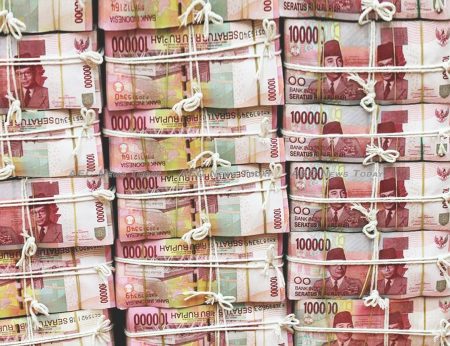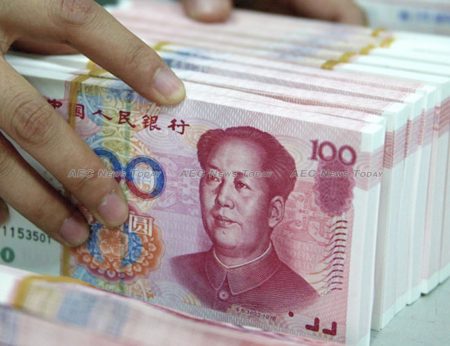When Australia reduced its foreign aid to Indonesia by 40 per cent in 2015, Indonesia’s Foreign Ministry responded that ‘Indonesia… is no longer a country that needs aid for development’.
At face value, this seems to be the case. Data released by the OECD’s Development Assistance Committee (DAC) in October 2017 shows that net foreign aid to Indonesia from DAC member countries and from multilateral aid agencies such as the World Bank (WB) has decreased and even turned negative in some years.
Foreign aid peaked at US$2.5 billion in 2005 after the 2004 Aceh tsunami. Since then, it decreased to negative $483 million in 2014 and negative $43 million in 2015. Indonesia continues to receive aid from traditional donors such as the United States, Japan, and Australia, but its repayments of concessional loans from DAC countries have started to exceed new aid commitments from these countries.
Foreign aid was a key feature of Indonesia’s economic development during between 1967 and 2003. Together with public revenues from oil and gas exports, it was one of the planks that sustained public expenditure and economic recovery in the face of the woes of the Sukarno regime in the early and mid-1960s.

Indonesia’s parliament passed legislation in 2003 and 2004 that required a reduction in foreign aid to a maximum of 3 per cent of the annual budget. Its purpose was to limit both dependence on foreign aid and the influence of foreign aid donors on Indonesia’s development policies.
In 2007 the Indonesian government ended the Consultative Group on Indonesia, which was the international group of aid donors that had previously coordinated foreign aid to the country.
Increasing aid-related debt repayments meant that Indonesia’s concessionary interest rate debt decreased from $62 billion in December 2011 to $48 billion in June 2014, according to Bank Indonesia (BI). Yet by September 2017, foreign debt has increased again to $51 billion. What happened?
The answer is that Indonesia has accepted increasing amounts of foreign aid from non-DAC countries.
In order for the Indonesian government to take advantage of non-DAC foreign aid (especially from China) while staying within the legal 3 per cent maximum contribution of foreign aid to Indonesia’s public budget, foreign aid from DAC countries apparently had to decrease to less than Indonesia’s repayments to DAC countries.
It has long remained unclear how much Chinese aid Indonesia receives. China is not a DAC member and does not report to the DAC. Nor does it report on the foreign aid that it grants, or concessional loans.
In October 2017, AidData, an institution associated with College of William and Mary in the United States, published a new database on China’s foreign aid between 2000 and 2014. It is based on public information, such as project announcements, press releases and press reports.
The definition of aid projects and programmes in this database includes grants and concessional loans with low interest, long grace periods until first repayments are due, and/ or long repayment terms. Most arrive in recipient countries as concessional loans provided by China’s state-owned banks such as the Exim Bank of China, not as government-to-government grants.
Indonesia is not the largest recipient of Chinese aid. It received just 2.4 per cent of total Chinese aid during 2000 and 2014. Still, this amounted to US$17 billion for 86 projects, or an average of US$2.5 billion in aid per year.
This was about half of the total turnover generated by Chinese firms from completed contracted projects in Indonesia in 2015, according to the Statistical Yearbook of China.
Chinese Aid Focused on Infrastructure

China’s concessional loans help to explain why Indonesia’s foreign debt increased during 2015 and 2016, despite the government’s intention to reduce its dependence on foreign aid.
What makes Chinese aid preferable to foreign aid from DAC countries?
At first glance, Chinese aid to Indonesia does not seem very different from bilateral DAC aid and multilateral aid, which also largely consists of concessional loans. Where Chinese foreign aid differs is in its overwhelming direction towards infrastructure development projects.
By contrast, DAC countries and multilateral agencies also assist Indonesia to achieve its Millennium Development Goals (MDGs) with aid projects in diverse areas such as poverty alleviation, education, capacity building in Indonesia’s public services, and strengthening civil society.
This emphasis on infrastructure development is in line with what many consider to be China’s core competencies in aid delivery.
In recent decades, Chinese companies have honed their experience through the rapid completion of major infrastructure projects. Chinese aid to Indonesia has financed bridges, roads, power plants, and a limited number of railway projects — all designed and constructed by Chinese firms.
The only exceptions have been a slum project financed through the Asian Infrastructure Investment Bank (AIIB), the establishment of Confucius Institutes at seven universities in Indonesia, as well as scholarships for Indonesian students to study in China.
Alleviating Indonesia’s significant infrastructure deficit is certainly one of Jakarta’s key development priorities. But Indonesia could now face the dilemma of whether it can continue to limit the influence of aid donors on its development policies when the delivery of bilateral foreign aid for infrastructure depends increasingly on a single provider.
This article is written by Pierre van der Eng, an associate professor in International Business, The Australian National University. It first appeared on East Asia Forum under a Creative Commons License and is reproduced here with its permission.
Feature photo Engin_Akyurt
Related:
- Jokowi, Xi Jinping scheduled to inaugurate pandas’ arrival to Indonesia (The Jakarta Post)
- Indonesia Seeks to Draw $28b Investment From China’s Belt and Road Forum: Minister (JakartaGlobe)
- Jokowi urges APEC to look beyond the numbers (The Jakarta Post)
East Asia Forum
It consists of an online publication and a quarterly magazine, East Asia Forum Quarterly, which aim to provide clear and original analysis from the leading minds in the region and beyond.
Latest posts by East Asia Forum (see all)
- China’s South China Sea bullying seeing increased blowback from Asean claimants – February 2, 2022
- Illusionary, delusionary or visionary? Cambodia tests living with COVID-19 – December 6, 2021
- Prioritising a Philippine–EU FTA is vital for post-pandemic recovery – July 26, 2020
- Time for Asean to stand up for itself in the South China Sea – July 25, 2020


